



Rajasthan, the largest state in India by area, has had a continuous pattern of oscillating power between Congress, the incumbent ruling party with Ashok Gehlot as the Chief Minister, and its opposition the BJP since 1993. It remains to be seen whether this pattern will continue in the forthcoming election as well.
However, this election has been marked by both the principal parties in the state having to deal with intra-party strife that is more intense than their inter-party rivalry. Meanwhile, the state’s economy has been grappling with issues of unemployment and persistent poverty.
Here’s a snapshot of Rajasthan’s economy in charts:
Rajasthan’s GSDP saw a double-digit growth in FY22 on the back of a favourable base effect post the economic disruption caused by the Covid-19 pandemic. Although FY23 saw the growth rate marginally dip as the economy normalised, it still remains higher than the years directly before the pandemic.
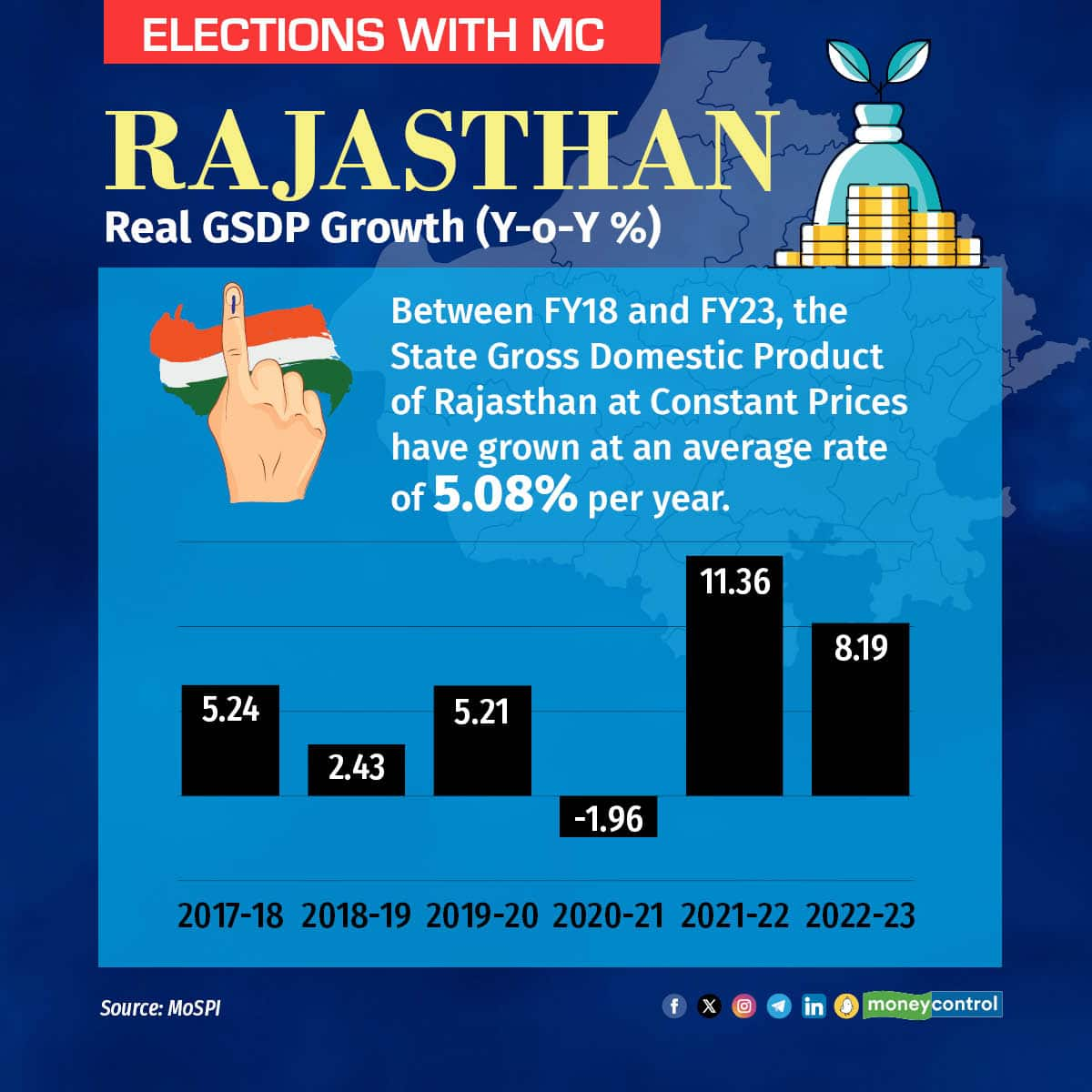
However, the state, which is supposed to contain its fiscal deficit to 3 percent of its GSDP, according to the Rajasthan Fiscal Responsibility & Budget Management (FRBM) Act, has struggled to do so. The fiscal deficit of the state has hovered above 4 percent in recent years. However, it is estimated to see a decline from 4.3 percent in FY23 to 4 percent in FY24.
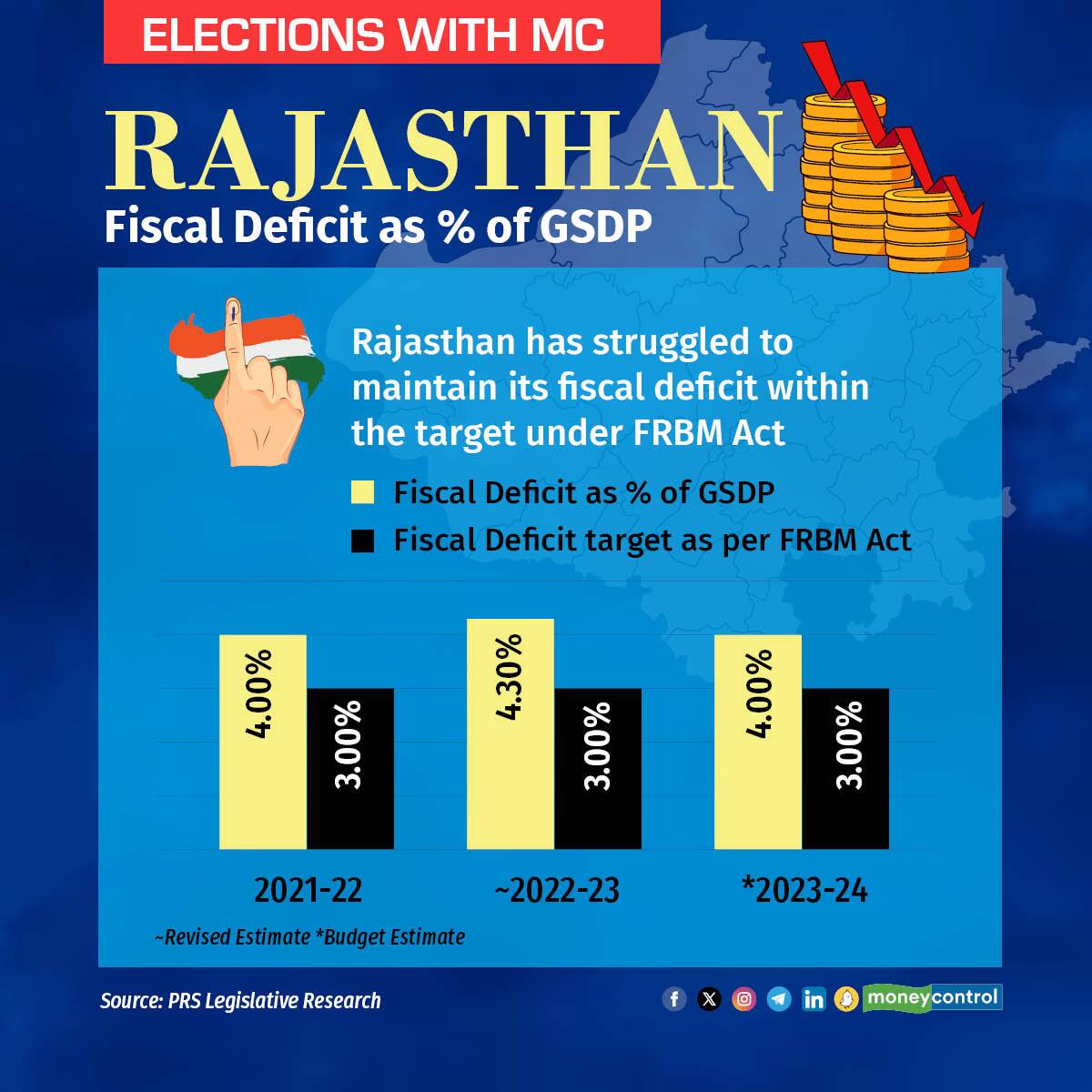
Meanwhile, the state’s unemployment rate stood at 4.4 percent in 2022-23, according to PLFS data. This is higher than the national average of 3.2 percent. In fact, unemployment, especially among the youth, has become one of the key election issues.
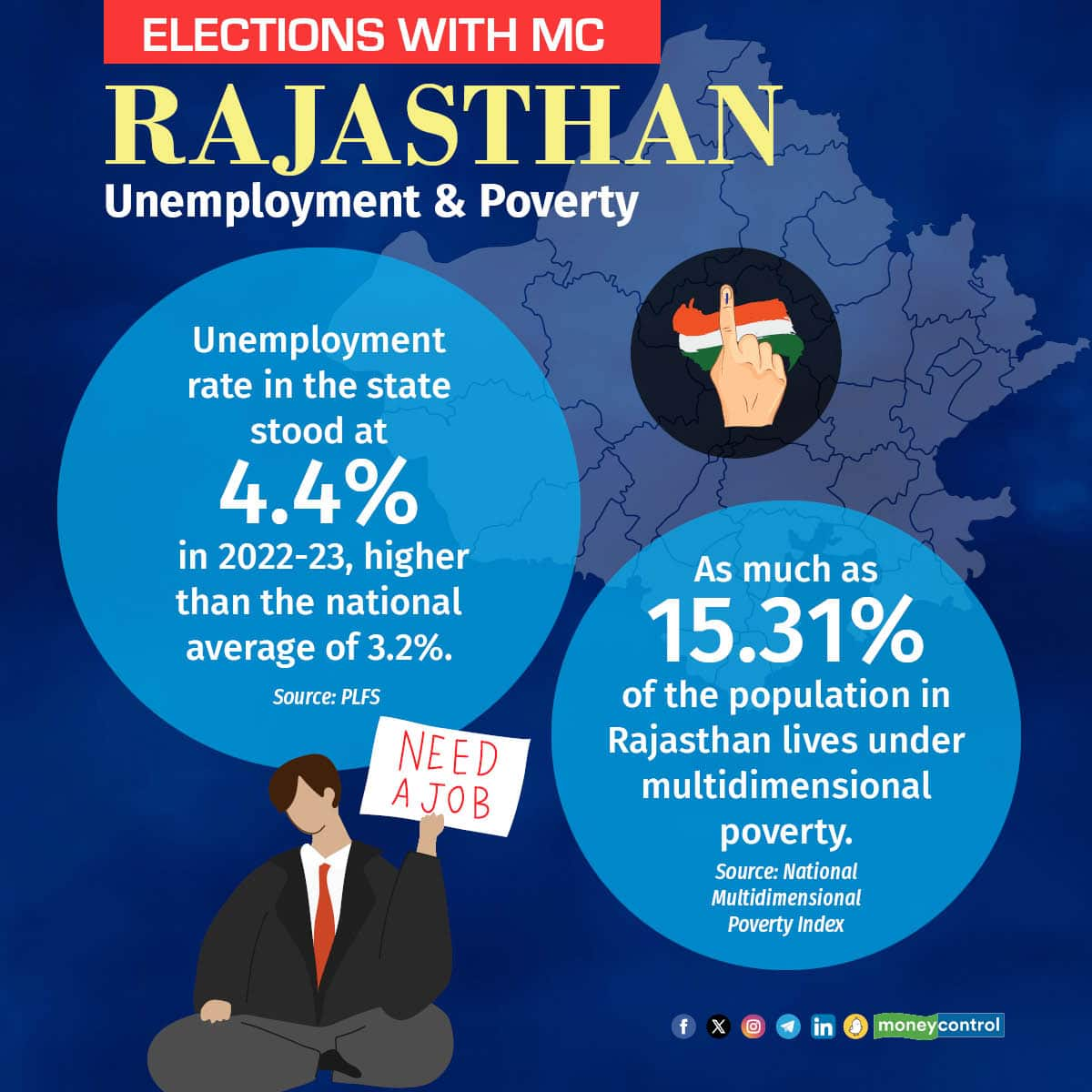
Meanwhile, the state also has a persistent issue of poverty, although it has seen a decline over the years. As much as 15.31 percent of Rajasthan’s population live under multidimensional poverty, marginally above the national average of 14.96 percent.
Also Read: Assembly Elections 2023: Why the battle in MP and Rajasthan looks close, but not in Chhattisgarh
The state’s per capita income, at Rs 81,231, remains lower than the national average of Rs 91,481.
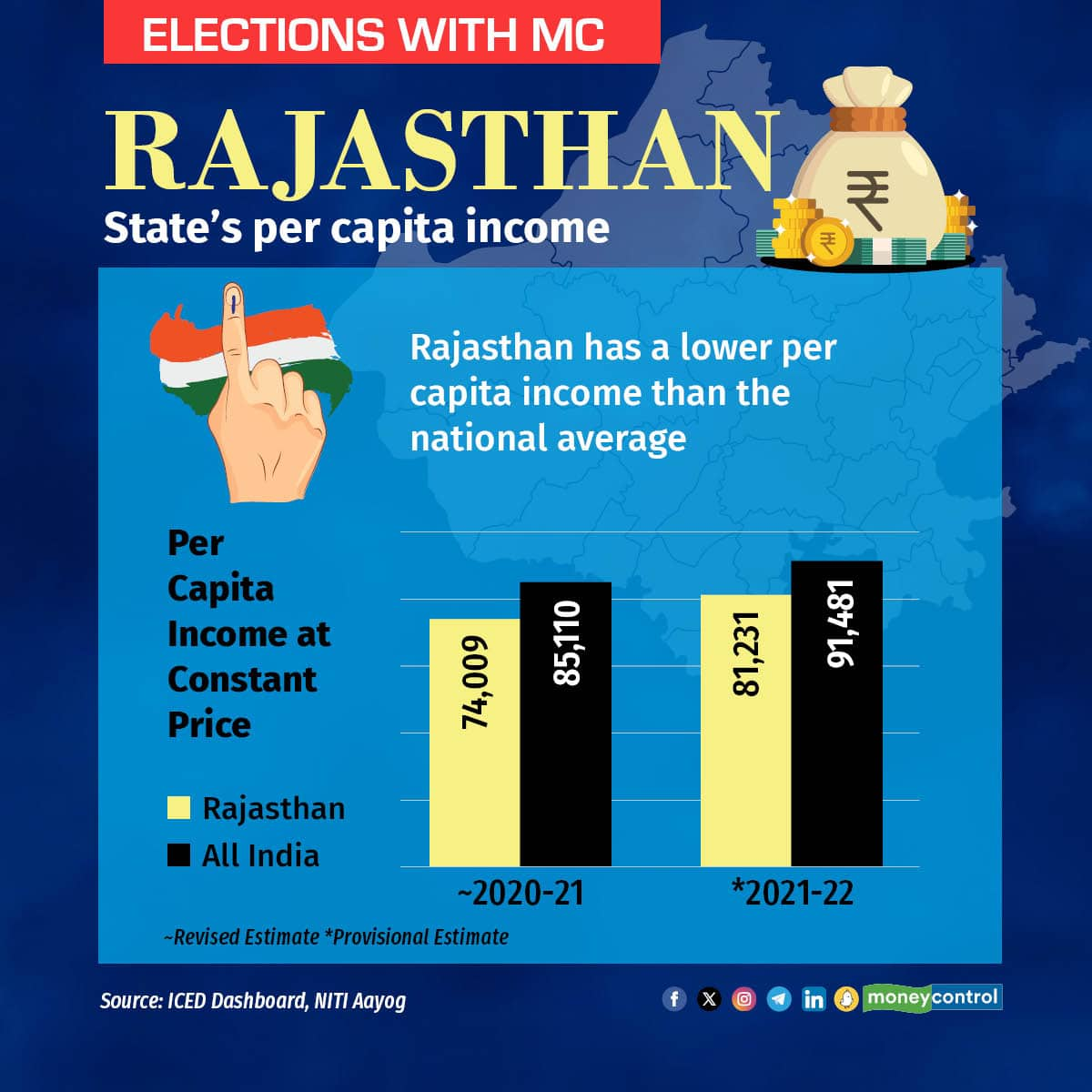
Annual inflation figures show that the state has largely been able to keep its prices below the national average in recent years, except during the pandemic in FY20.
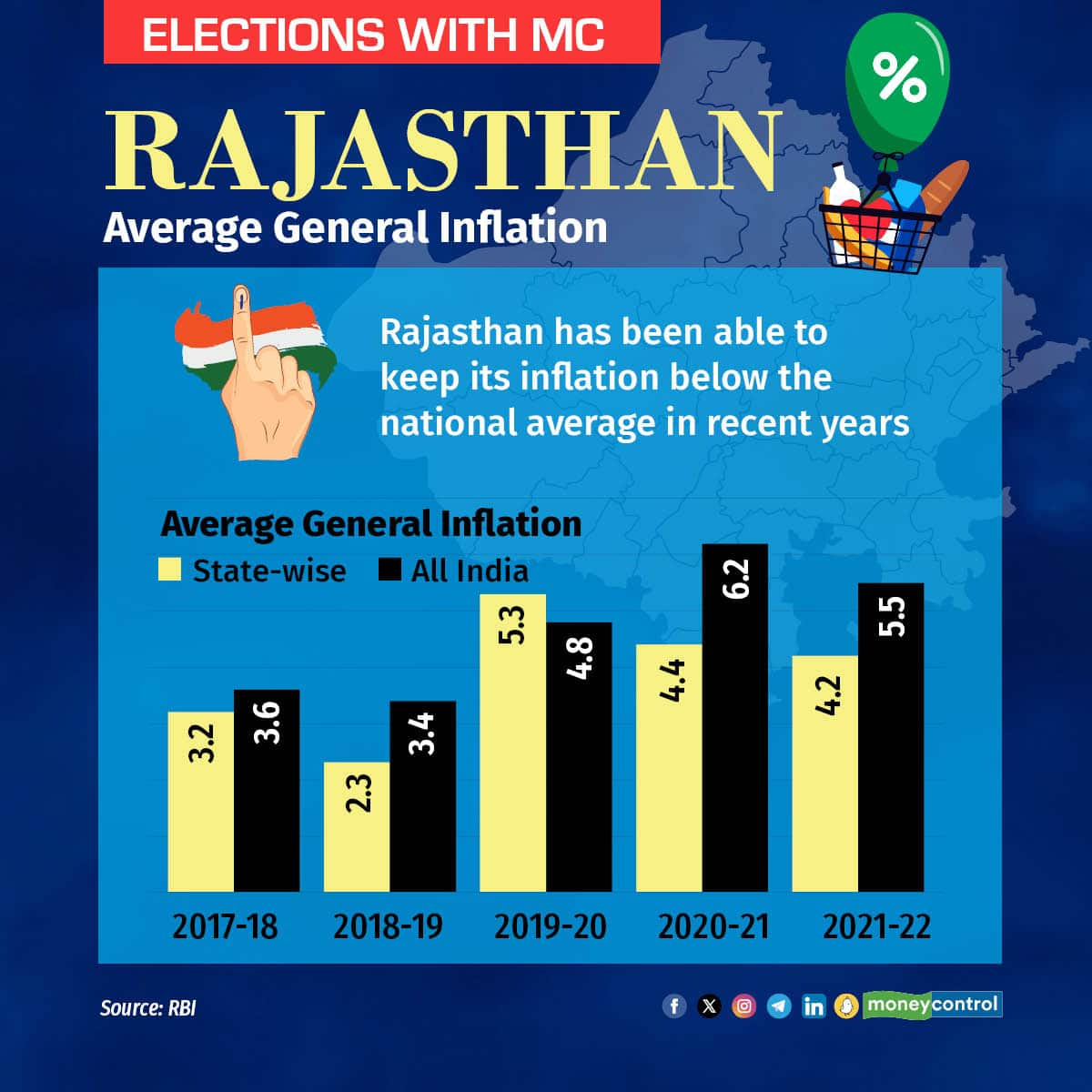
Data shows that the services sector was the biggest contributor of growth to Rajasthan’s economy in the last fiscal year. The sector saw a 10.7 percent growth in FY23, while the manufacturing and agricultural sectors clocked growth rates of 6.3 and 5.2 percent respectively.

Industrial investments in Rajasthan have been rather modest over the years. The gross capital formation of industries in the state stood at just above Rs 17,826 crore in FY20, which was only the seventh highest among the 10 most populous states in India.
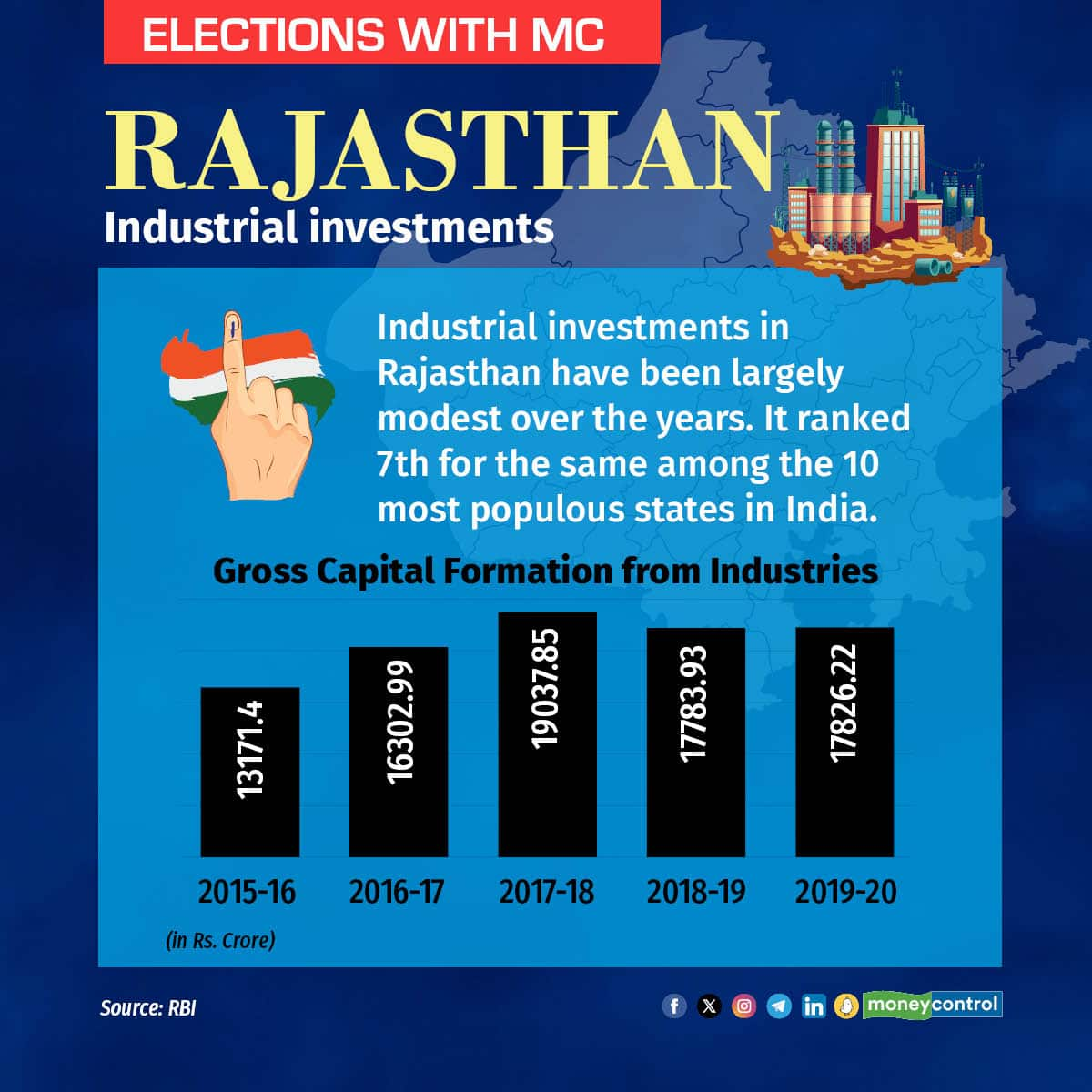
The state has 2,731 recognised start-ups as of 2022. These companies provide employment to as many as 29,405 persons in the state.
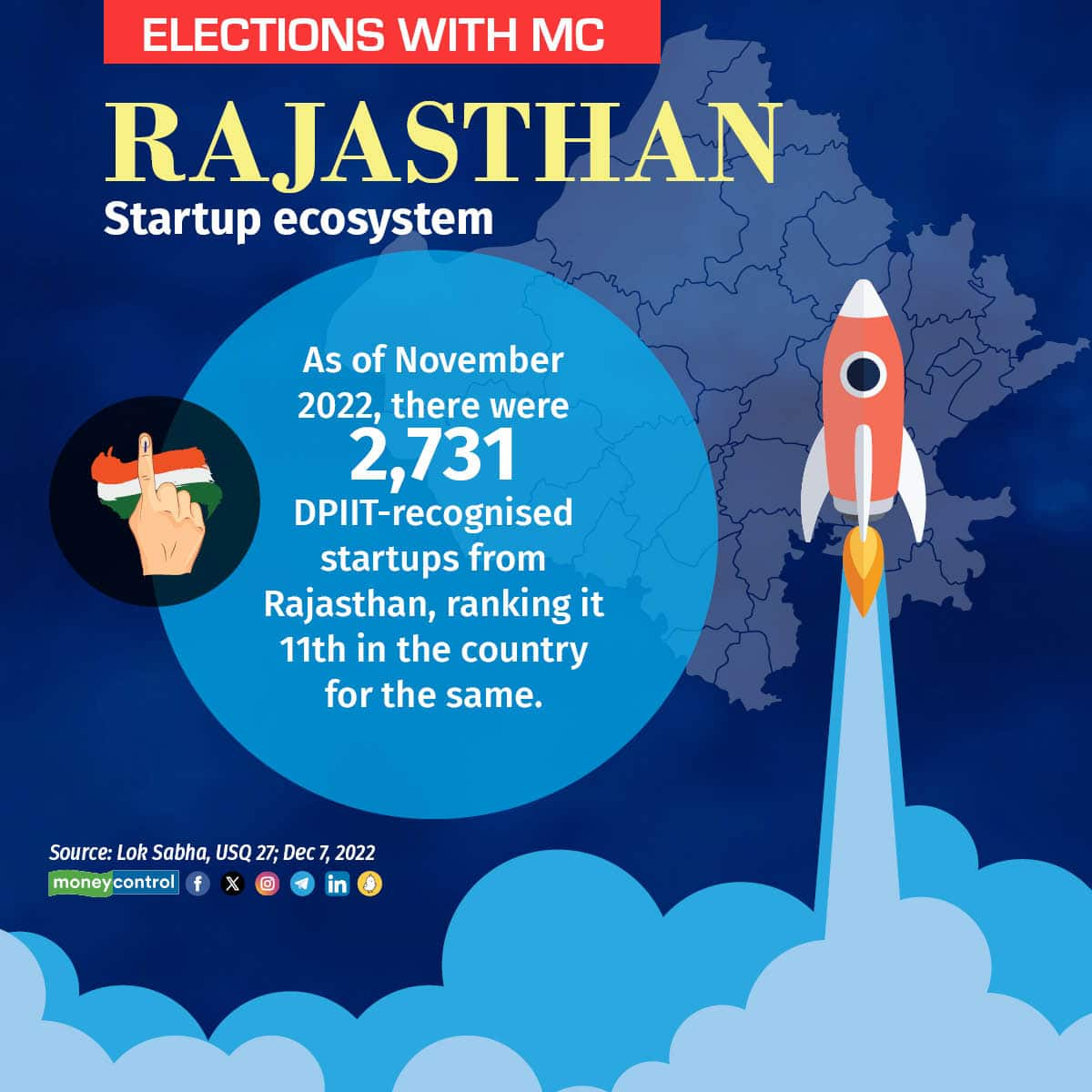
However, digital penetration still has a long way to go in Rajasthan. According to data from the Telecom Regulatory Authority of India (TRAI), with a subscriber base of 46.9 million, the state’s tele-density stands at 57.83 percent. This is lower than the national average of 63.53 percent.

As for the implementation of central government schemes, 34.39 million Jan Dhan accounts have been opened in the state so far. Of this, over 65 percent of the accounts were opened in bank branches in rural or semi-urban areas.
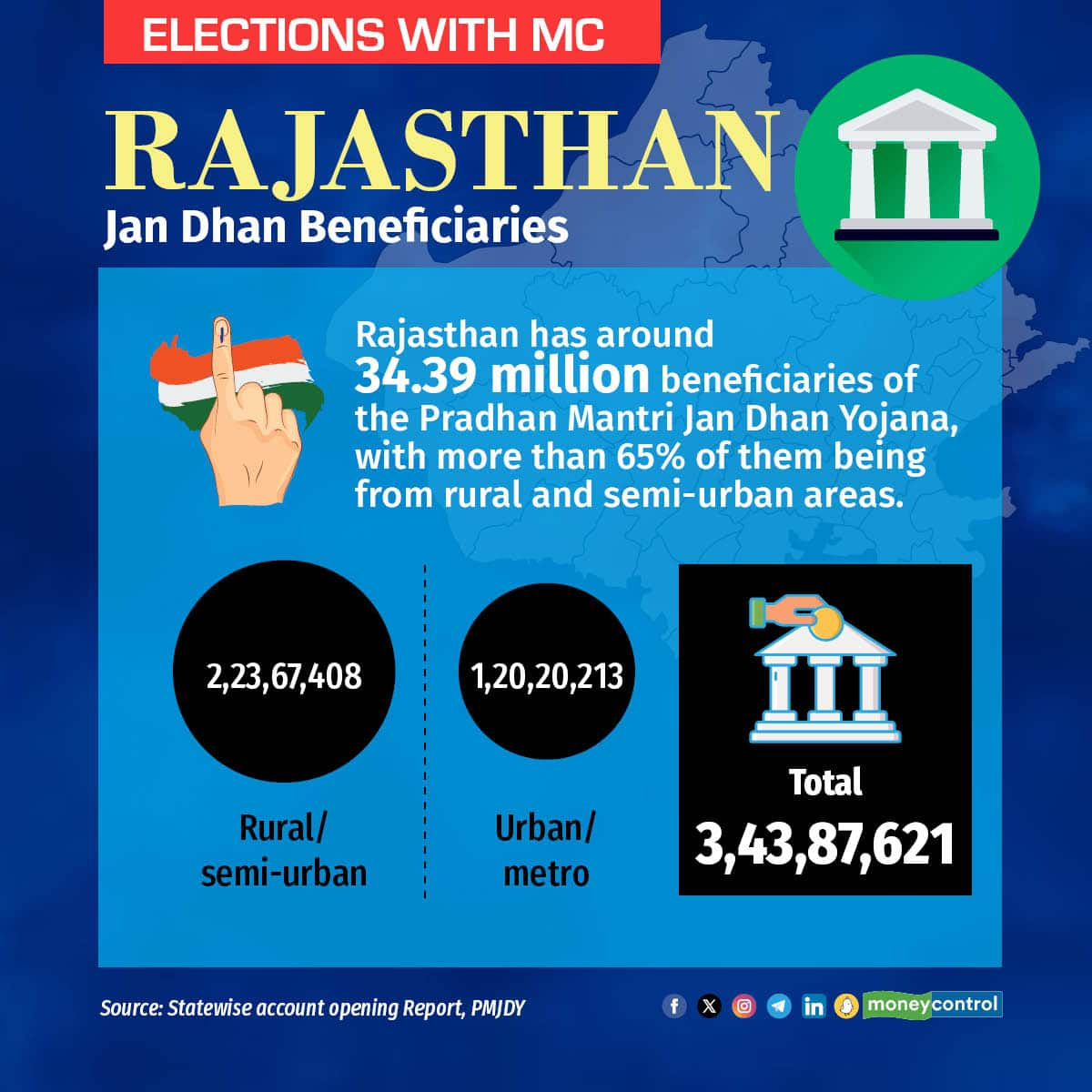
Meanwhile, 6.93 million beneficiaries have availed of gas connections through the Pradhan Mantri Ujjwala Yojana in the state. The state is ranked fifth in the country in this regard.
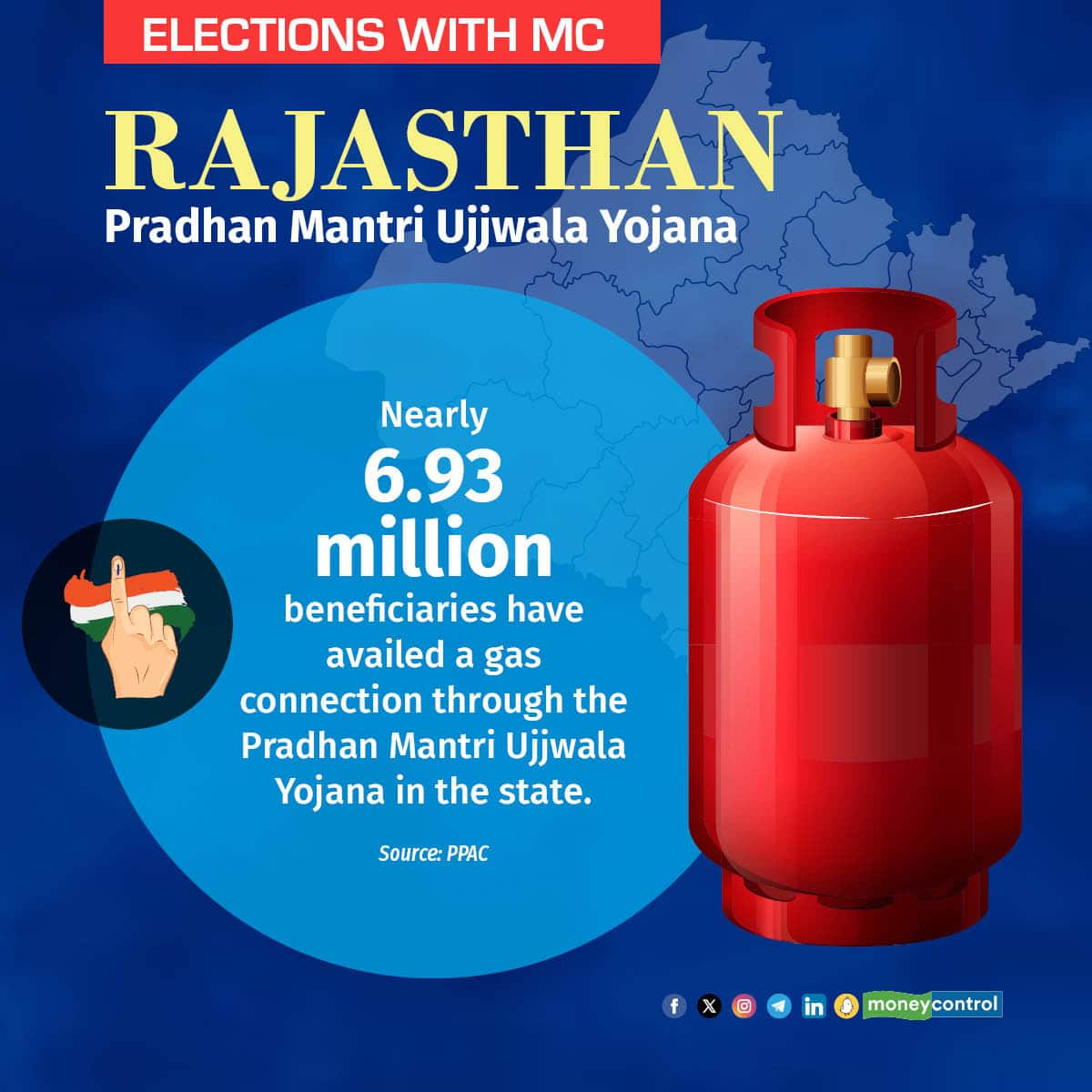
The Annapurna Food Packet Scheme is one of the major schemes of the state government under which families from weaker economic backgrounds are provided food packets every month. The scheme covers eligible beneficiaries as per the National Food Security Act, as well as impoverished families that had received financial assistance from the government during the Covid-19 pandemic.

Another state scheme, 'Mukhyamantri Kamdhenu Pashu Bima Yojana', is aimed at the farmers of the state. The scheme provides an insurance cover of up to Rs 40,000 per milch animal for a maximum of two cattle per family, provided that the beneficiary’s annual income is not more than rupees eight lakh per annum.
Discover the latest Business News, Sensex, and Nifty updates. Obtain Personal Finance insights, tax queries, and expert opinions on Moneycontrol or download the Moneycontrol App to stay updated!
Find the best of Al News in one place, specially curated for you every weekend.
Stay on top of the latest tech trends and biggest startup news.